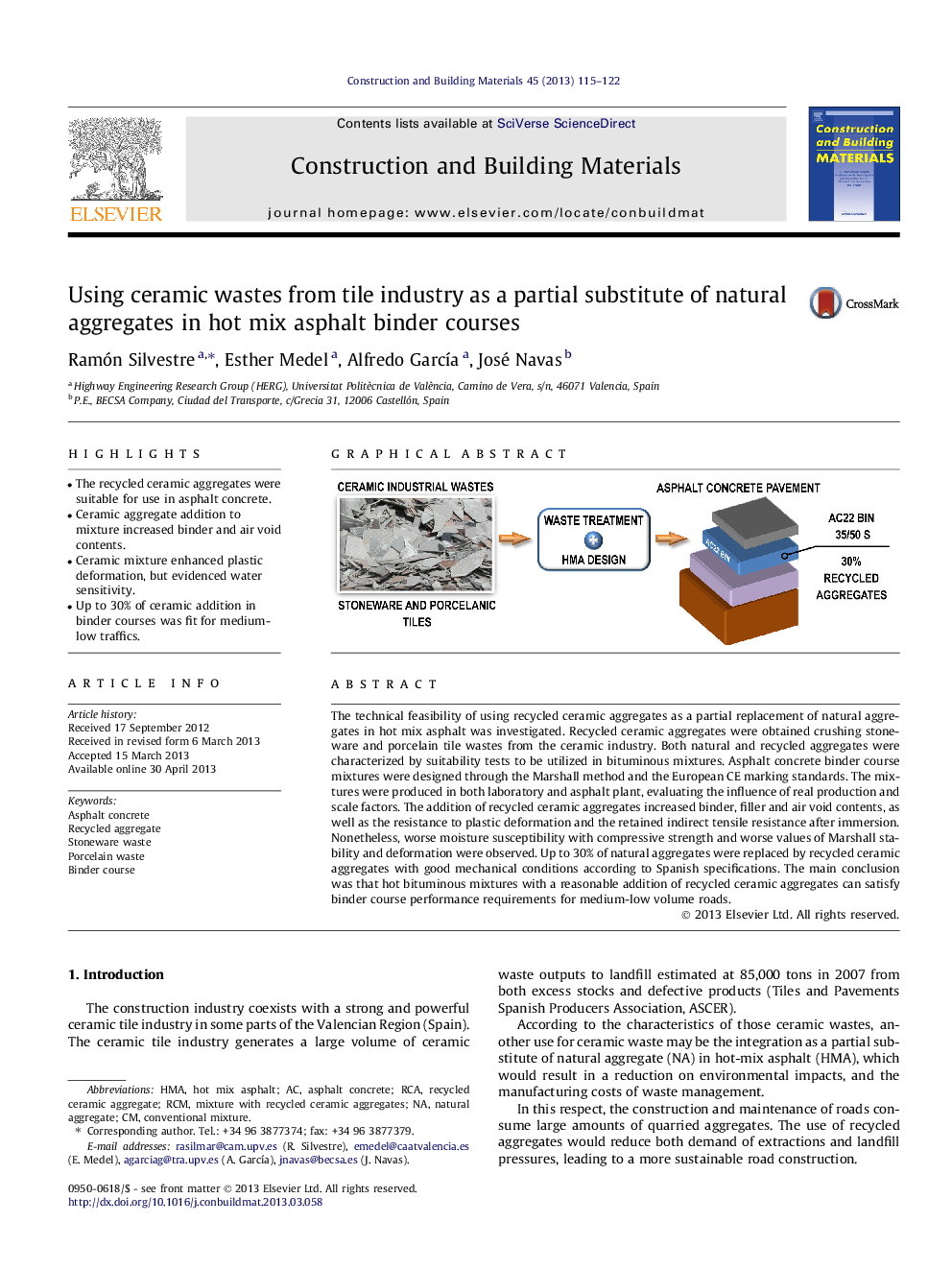| Article ID | Journal | Published Year | Pages | File Type |
|---|---|---|---|---|
| 258208 | Construction and Building Materials | 2013 | 8 Pages |
•The recycled ceramic aggregates were suitable for use in asphalt concrete.•Ceramic aggregate addition to mixture increased binder and air void contents.•Ceramic mixture enhanced plastic deformation, but evidenced water sensitivity.•Up to 30% of ceramic addition in binder courses was fit for medium-low traffics.
The technical feasibility of using recycled ceramic aggregates as a partial replacement of natural aggregates in hot mix asphalt was investigated. Recycled ceramic aggregates were obtained crushing stoneware and porcelain tile wastes from the ceramic industry. Both natural and recycled aggregates were characterized by suitability tests to be utilized in bituminous mixtures. Asphalt concrete binder course mixtures were designed through the Marshall method and the European CE marking standards. The mixtures were produced in both laboratory and asphalt plant, evaluating the influence of real production and scale factors. The addition of recycled ceramic aggregates increased binder, filler and air void contents, as well as the resistance to plastic deformation and the retained indirect tensile resistance after immersion. Nonetheless, worse moisture susceptibility with compressive strength and worse values of Marshall stability and deformation were observed. Up to 30% of natural aggregates were replaced by recycled ceramic aggregates with good mechanical conditions according to Spanish specifications. The main conclusion was that hot bituminous mixtures with a reasonable addition of recycled ceramic aggregates can satisfy binder course performance requirements for medium-low volume roads.
Graphical abstractFigure optionsDownload full-size imageDownload as PowerPoint slide
